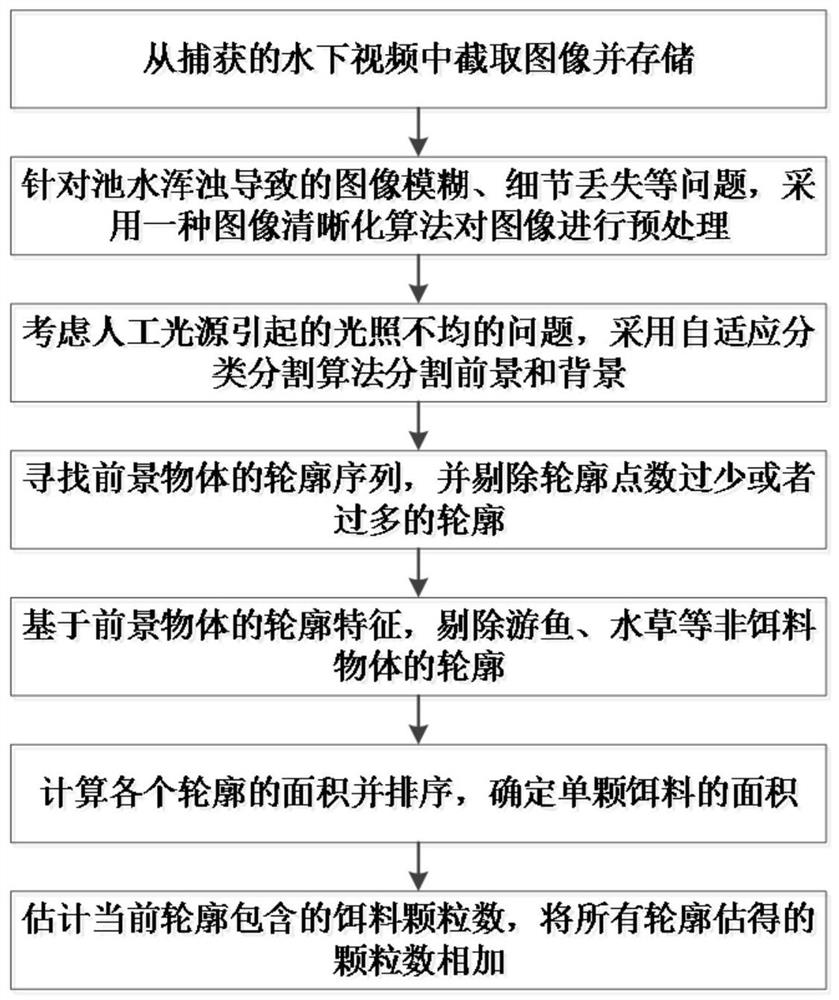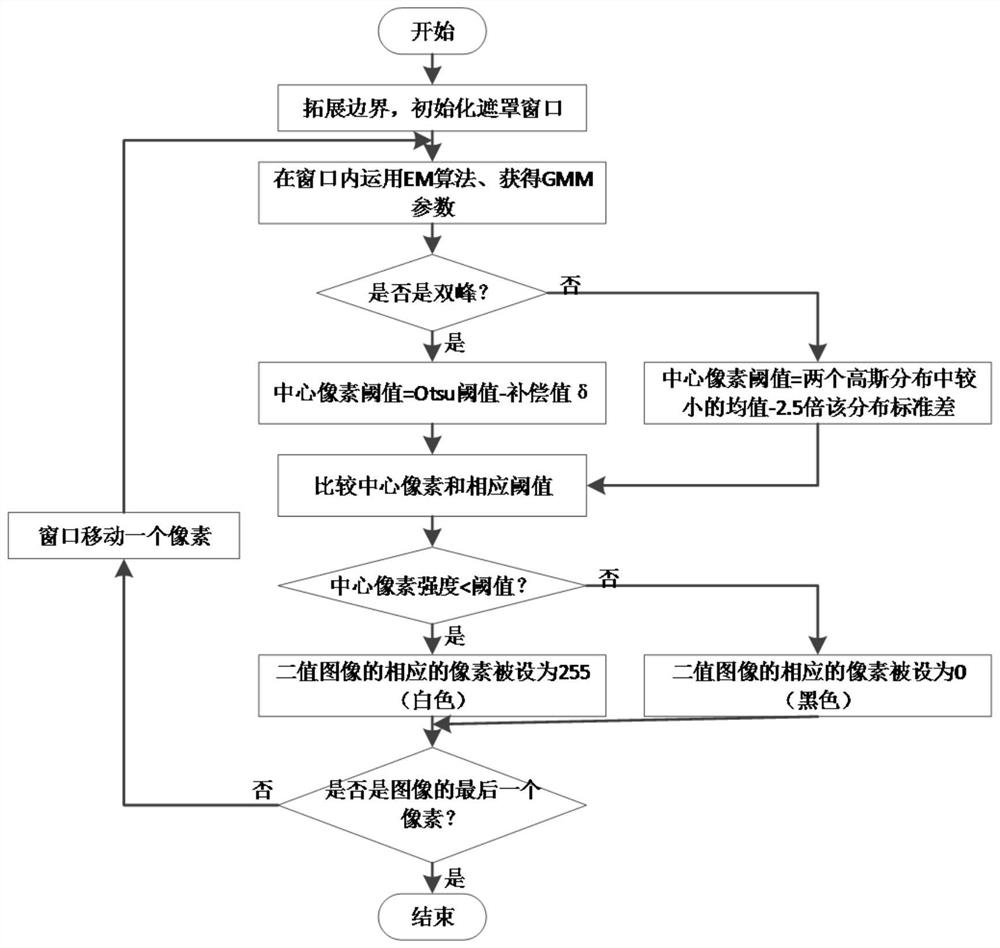A method of counting residual bait based on computer vision
A technology of computer vision and counting method, applied in the field of aquaculture and image processing, can solve the problems of low bait accuracy, in the stage of theoretical research, and unable to create economic benefits, etc., to achieve the effect of improving image contrast and increasing detail performance
- Summary
- Abstract
- Description
- Claims
- Application Information
AI Technical Summary
Problems solved by technology
Method used
Image
Examples
Embodiment
[0076] Such as figure 1 As shown, the present invention provides a kind of residual bait counting method based on computer vision, comprises the following steps:
[0077] Step 1, from the captured underwater video, intercept the bait image according to the frequency of interval 10s;
[0078] Step 2, preprocessing the image;
[0079] Specifically, to solve the problems of blurred images and loss of details caused by turbid pool water, an image sharpening algorithm is adopted, which combines a dark channel prior-based dehazing algorithm and a limited contrast adaptive histogram equalization, such as figure 2 As shown, the specific steps include:
[0080] Step 2.1, based on the dark channel prior theory, calculate the dark channel map of the intercepted bait image and find the median m of all dark channels, and judge whether m is less than the set threshold 25, if m=25, skip to step 2.4;
[0081] Calculate the dark channel of the underwater image based on the dark channel pri...
PUM
 Login to View More
Login to View More Abstract
Description
Claims
Application Information
 Login to View More
Login to View More - R&D
- Intellectual Property
- Life Sciences
- Materials
- Tech Scout
- Unparalleled Data Quality
- Higher Quality Content
- 60% Fewer Hallucinations
Browse by: Latest US Patents, China's latest patents, Technical Efficacy Thesaurus, Application Domain, Technology Topic, Popular Technical Reports.
© 2025 PatSnap. All rights reserved.Legal|Privacy policy|Modern Slavery Act Transparency Statement|Sitemap|About US| Contact US: help@patsnap.com



